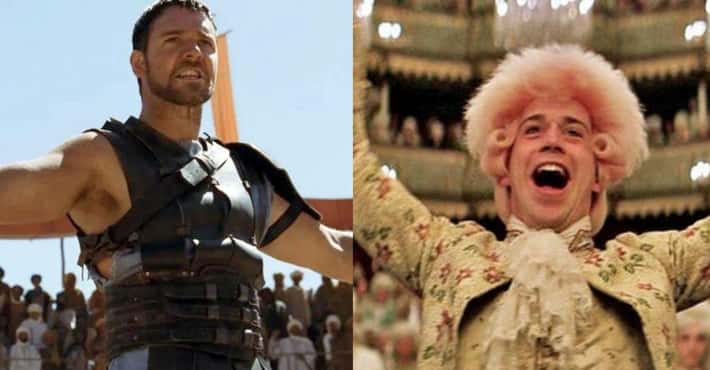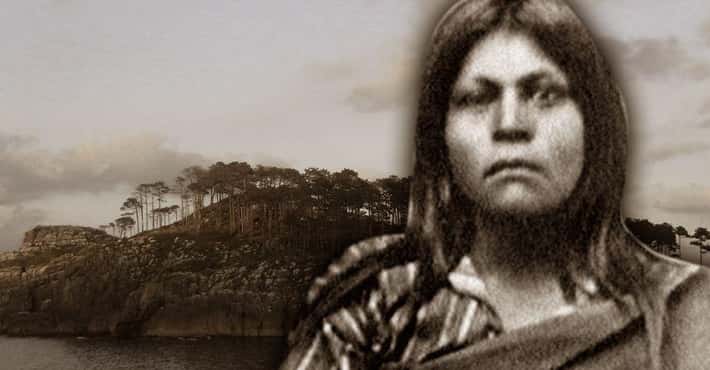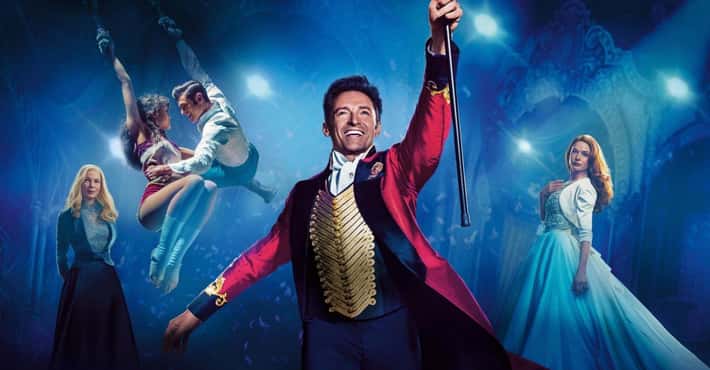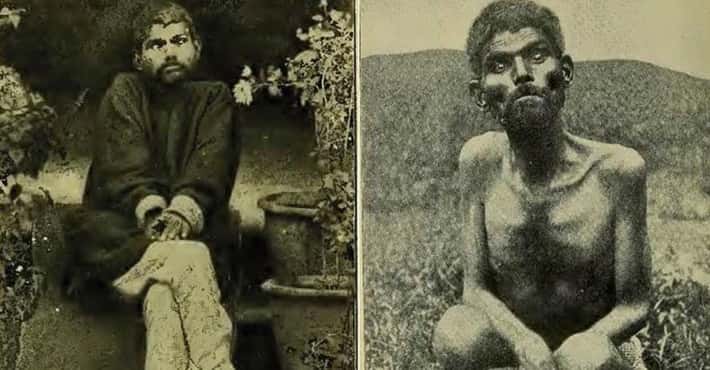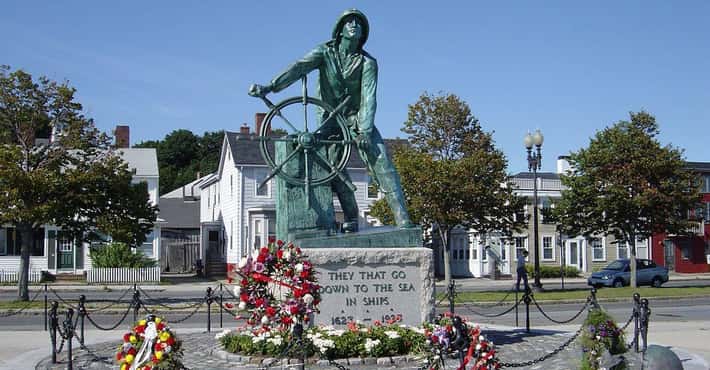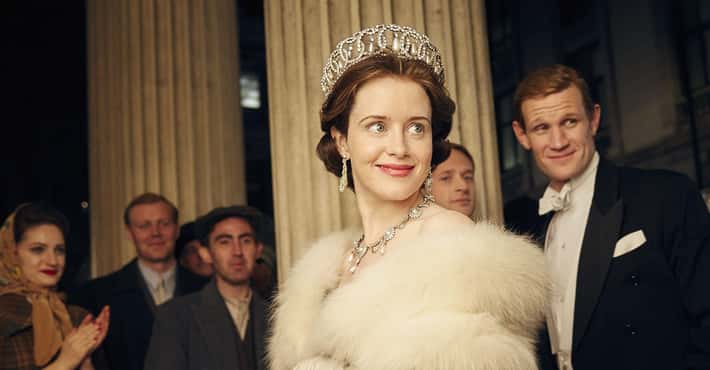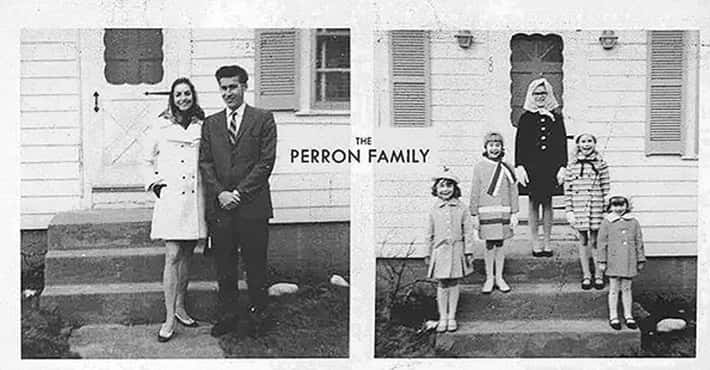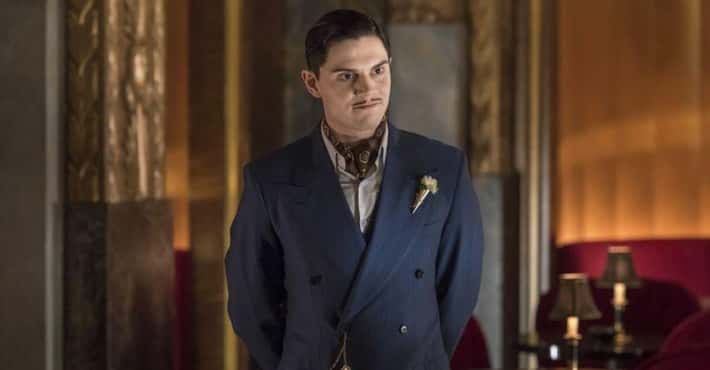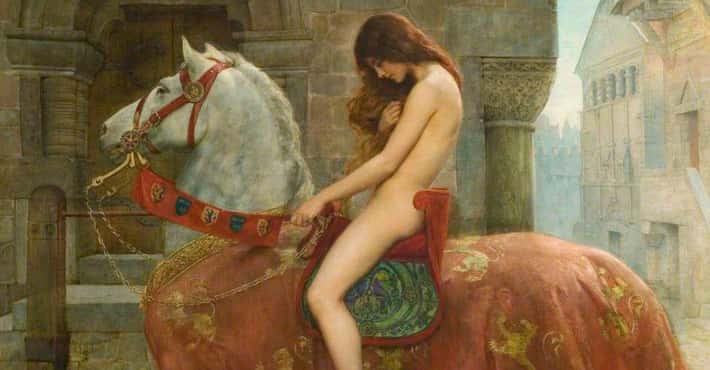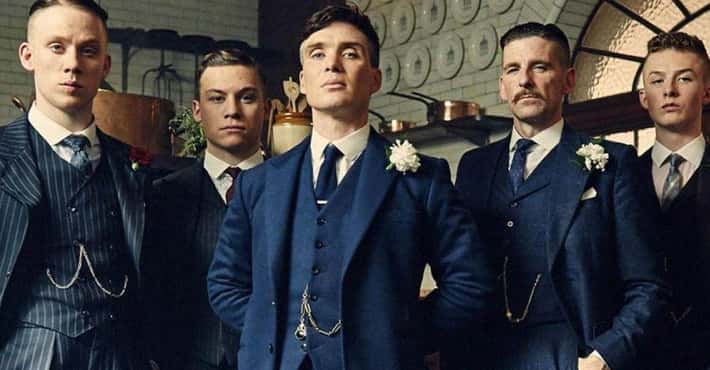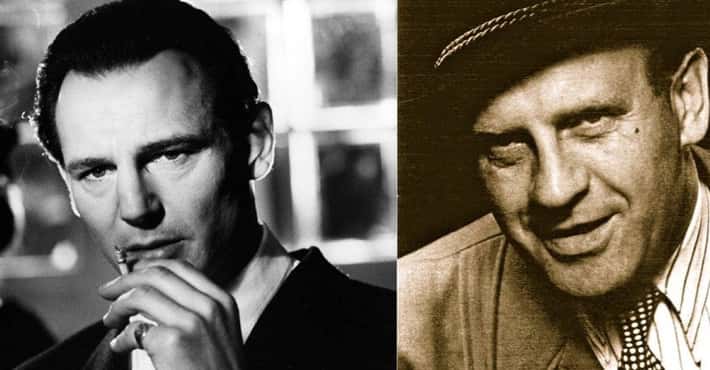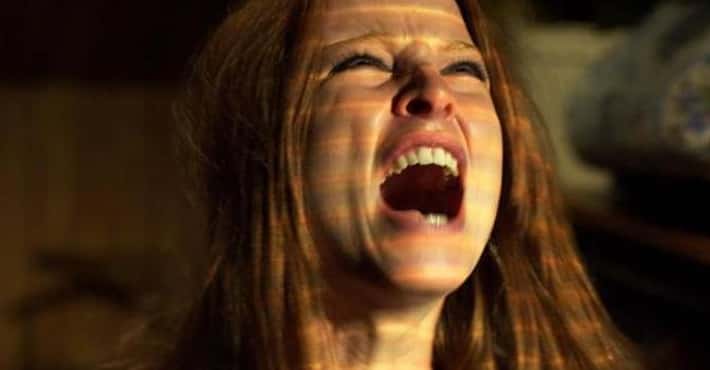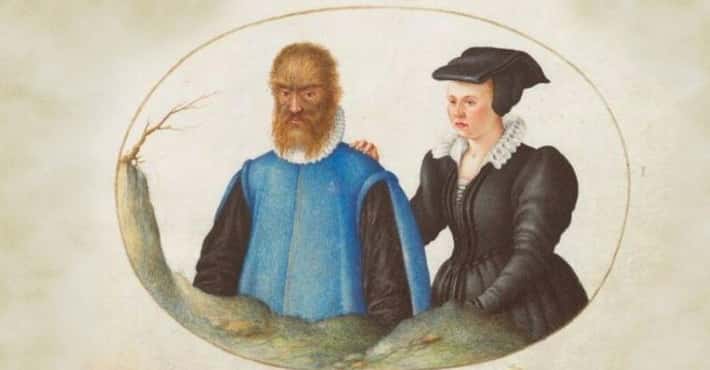
What 'The Empress' Actually Gets Right - And Wrong - About History
Copy link
Vote up the facts about The Empress that you were wondering about, too.
The Empress on Netflix provides a look at the early life of Empress Elisabeth of Austria. Through six episodes, viewers see the rebellious and spirited young woman who would go on to have a life plagued with tragedy.
The story behind The Empress is more complicated than the show can depict accurately, but it does provide many facts about Elisabeth (often called “Sisi”). We also meet Emperor Franz Joseph, his mother, Sophie, and the other figures who defined life at the Habsburg court in Austria during the 19th century.
Notable fictions are woven into The Empress, so we decided to examine the overall historical accuracy of the series. Take a look at what we found out and vote up the subjects you were curious about, too.
- Photo: Netflix183 VOTES
Elisabeth Was Only 15 When She Got Engaged To Franz Joseph
The Empress presents Elisabeth as comparable in age with her cousin and future husband. In truth, the Duchess of Bavaria was only 15 years old when she arrived in Vienna with her older sister and mother in 1853. Franz Joseph was already 23.
During the mid-19th century, the mean age for marriage among Eastern European peasants was roughly 35 for men and about 32 for women. Clearly, Elisabeth and Franz Joseph were not members of the peasantry, but her young age at the time of her marriage stuck with her.
Later in life, she reportedly said:
Marriage is an absurd institution. One is sold as a fifteen-year-old child and makes a vow one does not understand and then rues for thirty years or more and cannot undo.
- Photo: Netflix
Ferdinand Maximilian Joseph, or Maximilian as he's called in The Empress, was one of Franz Joseph's younger brothers. Born in 1832, he was rumored to be the offspring of an affair between his mother and Napoleon II (Napoleon Bonaparte's son), but this has never been substantiated.
While Maximilian and Franz Joseph did have differing political views, with the former considered more liberal than the absolutist emperor, they were quite close at various points during their lives. After the attempted assassination of Franz Joseph in 1853, Maximilian drove the effort to have a church erected at the site of the event.
Maximilian had a successful career in the Navy, served as viceroy of Lombardy and Venice, and was sent to Mexico in 1864. By then, Maximilian had married Charlotte of Belgium - called Carlotta - who was crowned empress alongside her emperor husband. With respect to Maximilian's romantic life, he was not married before Charlotte, something that is implied in The Empress, and he was only friends with his sister-in-law, Elisabeth.
There's no doubt that Maximilian was ambitious and that may have been threatening to Emperor Franz Joseph. Some observers note Maximilian's activities in Lombardy and Venice - as well as those in Mexico - as part of an effort by Franz Joseph to get rid of him. Before Maximilian departed for Mexico in 1864, he had to renounce his claims to the throne in Austria.
His role as emperor in Mexico was likely a way for Maximilian to find the type of power he would never have gotten had he stayed in Europe. There's no evidence Maximilian actively worked against his brother, but he was definitely a man seeking authority in one capacity or another.
- Photo: Netflix336 VOTES
Elisabeth Was Incredibly Worried About Her Physical Appearance
In The Empress, Elisabeth is shown as a free spirit who has little regard for the rules. This is accurate to her personality, but there are some inconsistencies when it comes to how she dealt with the pressures she felt in life.
Elisabeth was prone to bouts of depression and became focused on her physical appearance. In the days leading up to her trip to Vienna in 1853, she reportedly confined herself to her room where she would weep. Her demeanor appeared to be under “a faint shadow” while she was in Munich before her wedding, and her mental health became more fragile at the imperial court.
When Elisabeth is tightly corsetted early in the series, it's telling just how important a small waist was for the empress. Considered one of the most beautiful women Europe, Elisabeth developed techniques for restricting what she ate and took on an intense exercise regimen. She limited herself to specific foods like eggs, milk, and oranges, and spent hours doing gymnastics, walking, and lifting weights. While the raw eggs Elisabeth consumes on the show are for fertility, she was also known to drink “a dreadful mixture of five or six raw eggs and salt” as part of her beauty regimen.
Elisabeth and her ladies-in-waiting also spent hours caring for her skin and hair, as the show implies. This was extremely important to the Empress. Elisabeth bathed in olive oil, “scorned pillows and lay quite flat, probably because someone had once persuaded her this would benefit her beauty,” and washed her hair in eggs and brandy - a process that lasted all day.
- Photo: Netflix459 VOTES
There Was No Countess Leontine Von Apafi - Or Any Commoner Named Ava Who Killed Her
The intrigue surrounding Elisabeth's attendant, Ava, and how she eliminated Countess Leontine von Apafi to get close to the empress, is fiction. There was no real countess, but there was a Prince of Transylvania named Mihaly Apafi who lived during the late 17th century. Both he and his son, also named Mihaly, recognized the authority of the Habsburgs.
This means Elisabeth didn't have an attendant named Leotine von Apafi, nor was she killed. Elisabeth did prefer Hungarian ladies-in-waiting later in life (Transylvania was part of Hungary until 1920), but Ava represents the larger revolutionary spirit of the time. Revolutions in Habsburg lands in 1848 and 1849 ended up in more centralization by Austria, which only heightened discontent.
Centralization in Austria was largely the doing of the Austrian Empire's Minister of the Interior Alexander von Bach, who was already well-established in the imperial office by the time Elisabeth arrived. Stronger ties with the German Empire also exacerbated social and political tensions.
The assassination attempt against Franz Joseph in 1853 was a reflection of these circumstances. Janos Libenyi, a Hungarian nationalist, knifed Franz Joseph in the neck but, because the emperor was wearing a uniform with a collar, he survived. The attempt on the emperor's life not only highlighted ongoing strife in Habsburg lands, but also emphasized Franz Joseph's need of an heir.
- Photo: Netflix575 VOTES
Duchess Helene Of Bavaria Was Supposed To Marry Franz Joseph, But He Rejected Her
The arrival of Helene (called “Nene”) and Elisabeth at the Imperial Court in Vienna was because their mother, Ludovika, had arranged for Helene to marry Emperor Franz Joseph. Ludovika and Sophie were sisters, which made their children first cousins, but this was no matter. The main concern was for Franz Joseph to get married and produce a male heir.
Helene had been groomed for such a match; her mother considered her the true beauty in the family and prepared her to be a proper wife and mother. Despite her training and docile nature, Franz Joseph pushed her aside. When the Austrian emperor first saw the young woman (in her mourning clothes due to the failure of her luggage to arrive):
Her straight dark hair, confined in the intricate web of a pompadour, hung here and there in dreary strands. Due to nervousness, the girl's hands were clammy with cold and the tip of her nose was red. There was a frightened quiver about the thin lips, where large teeth gnawed at the flesh in an effort to draw more of the same color.
It was Elisabeth who caught his attention, and the emperor reportedly stared at her as his mother tried to steer him back to Helene. Franz Joseph made it clear he wanted to marry Elisabeth, much to her older sister's dismay. Helene was reportedly inconsolable and didn't marry until five years later when she wed Maximilian Anton of Thurn und Taxis.
- Photo: Netflix
Between episodes one and two of The Empress, some time passes between when Franz Joseph announces he wants to marry Elisabeth - or no one at all - and when the Duchess of Bavaria arrives for the wedding. The time between their engagement (in mid-1853) and their nuptials on April 24, 1854, was eight months.
During that period, Elisabeth turned 16 and the emperor visited his future wife in Munich three times. She made public appearances and was greeted by enthusiastic crowds; the attention embarrassed her. One observer noted “a faint shadow has fallen over the grace and beauty of her bright young face.” At one point, Elisabeth reportedly said to her mother, “if only he were a tailor.”
For his part, Franz Joseph found it painful to be away from Elisabeth during that time. During one visit, he wrote a letter to his mother that said:
Never, my dear Mama, will I be able to thank you enough for having brought such happiness for me. Every day I love Sisi more, and I am ever more convinced that no one else would suit me better than her.
- Photo: Netflix744 VOTES
Princess Sophie Of Bavaria Was Ruthless About Elisabeth Producing An Heir
Elisabeth's mother-in-law and aunt, Sophie, is adamant that her son's wife become pregnant and produce an heir as soon as possible. The Empress shows Elisabeth pushing back against this - continuing to ride horses and spend time in the woods - but she does learn she's pregnant as the last episode comes to a close.
Ideally, Elisabeth would give birth to a boy to put the succession question to rest. However, her first child was a girl named Sophie (after her grandmother - by her grandmother) born in March 1855. Sophie passed in May 1857, one year after her sister, Gisela, was born. Elisabeth finally gave birth to a boy, Crown Prince Rudolf, in August 1858. A fourth child, Marie Valerie, was born in April 1868.
The path to producing an heir was difficult for Elisabeth emotionally and physically, but Franz Joseph's mother may have made it worse. The elder Sophie essentially took over care of her grandchildren. Prior to Rudolf's birth, a scathing pamphlet about “the natural destiny of a Queen…to give an heir to the throne" was circulated in Austria - and it was rumored to have been written by the elder Sophie.
If the Queen is so fortunate as to provide the State with a Crown Prince, this should be the end of her ambition she should by no means meddle with the government of an Empire, the care of which is not a task for women…. If the Queen bears no sons, she is merely a foreigner in the State, and a very dangerous foreigner, too. For as she can never hope to be looked on kindly here, and must always expect to be sent back where she came from….
- Photo: Netflix857 VOTES
Empress Elisabeth Of Austria First Met Her Future Husband In 1848
When Duchess Helene of Bavaria arrives in Vienna, she has her sister, Elisabeth, and her mother, Ludovika, with her. While the show depicts this as the first time both Helene and Elisabeth meet Franz Joseph - their cousin - they had actually come face-to-face before.
In 1848, Franz Joseph met both Helene and Elisabeth while in Innsbruck, Austria. He had been sent to Innsbruck by his mother, Sophie, to avoid the uprisings that raged in Vienna. Neither 14-year-old Helene nor 10-year-old (or 11, depending on the source) Elisabeth left any sort of impression on Franz Joseph. He had also recently been involved in his first military action at the Battle of Saint Lucia and was likely distracted by the events surrounding his impending accession to the imperial throne.
- Photo: Netflix960 VOTES
Elisabeth And Her Family Really Lost Their Luggage On Their Way To Meet The Emperor
On her way to visit her sister, Princess Sophie of Bavaria, and her nephew, Emperor Franz Joseph, Ludovika of Bavaria developed a migraine. This delayed her arrival with her daughters, Helene and Elisabeth, at the imperial court. It also resulted in neither their luggage nor their maids arriving with them. Because all three were in mourning (as referenced in The Empress, although it was for an aunt, not an uncle), they truly did only have dark clothing on hand when they met with Sophie and Franz Joseph.
To rectify the situation, Archduchess Sophie intervened and sent one of her attendants to find other clothing. Meeting in black, however, may have benefitted Elisabeth. Sophie later noted that Elisabeth “was adorable in her very plain, high-necked black dress.” Helene, however, looked appropriately drab and didn't stand out at all.
- Photo: Netflix1034 VOTES
Elisabeth's Poetry Was A Big Part Of Her Life - And She Wrote Much Of It Under A Pen Name
Throughout The Empress, Elisabeth pens many poems, but the show offers a very limited look at the true writings of the future empress. As a young girl, the rebellious Elisabeth would spend time in her room writing poetry to escape the controls her mother put upon her. She was a prolific reader and became enamored with the writings of German poet and political thinker Heinrich Heine.
Elisabeth actually took on an alter-ego of sorts when she wrote poetry. She would later sign her poems “Titania,” the name of the queen of the fairies in Shakespeare's A Midsummer Night's Dream. She had an affinity for the character, and images of Titania and a donkey head (representing Nick Bottom from the same play) hung in all of her residences. Elisabeth often quipped, “We are all given to caress the ass's head of our illusions.”
- Photo: Netflix1131 VOTES
Elisabeth's Actual Wedding Dress Featured An Embroidered White Coat
The wedding dress worn by the real Elisabeth in 1853 differed significantly from the one shown in The Empress. The actual dress was described in Polly Cone's Imperial Style: Fashions of the Hapsburg Era:
Elisabeth wore a white dress of moiré antique heavily embroidered with gold and silver, and with it a heavy white coat embroidered in gold, with a long train. The coat was held at the shoulders with large diamond brooches.
The veil of Brussels lace was fastened to the diamond diadem by a bridal wreath of fresh myrtles and orange blossoms… around her neck she wore a collar of diamonds and opals that matched the diadem; several diamond bouquets secured the bows and trimmings on her dress. On her bosom, among all the jewels, the flower-loving Elisabeth wore a bouquet of fresh roses.
The show's version of the dress includes no coat or diamond brooches. Similarly, The Empress features no bridle wreath; Elisabeth's jewelry does not match the description; and the soon-to-be empress does not carry roses in her bouquet.













